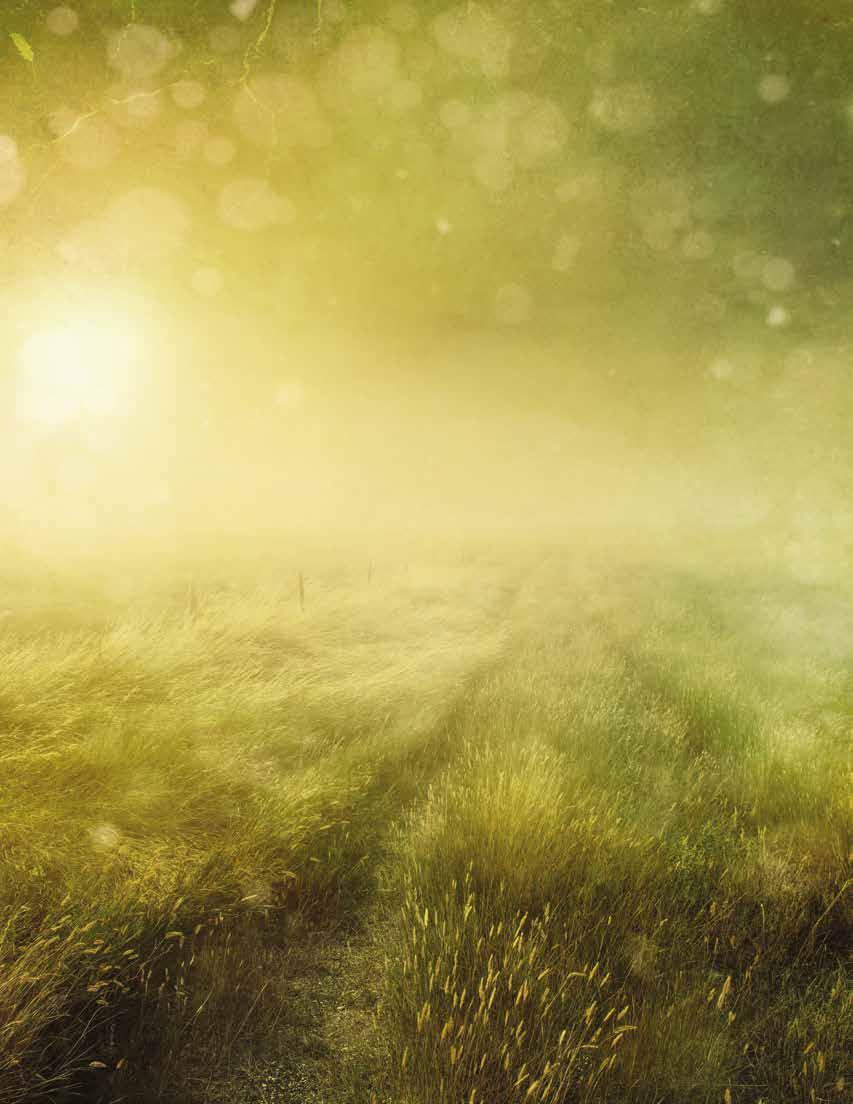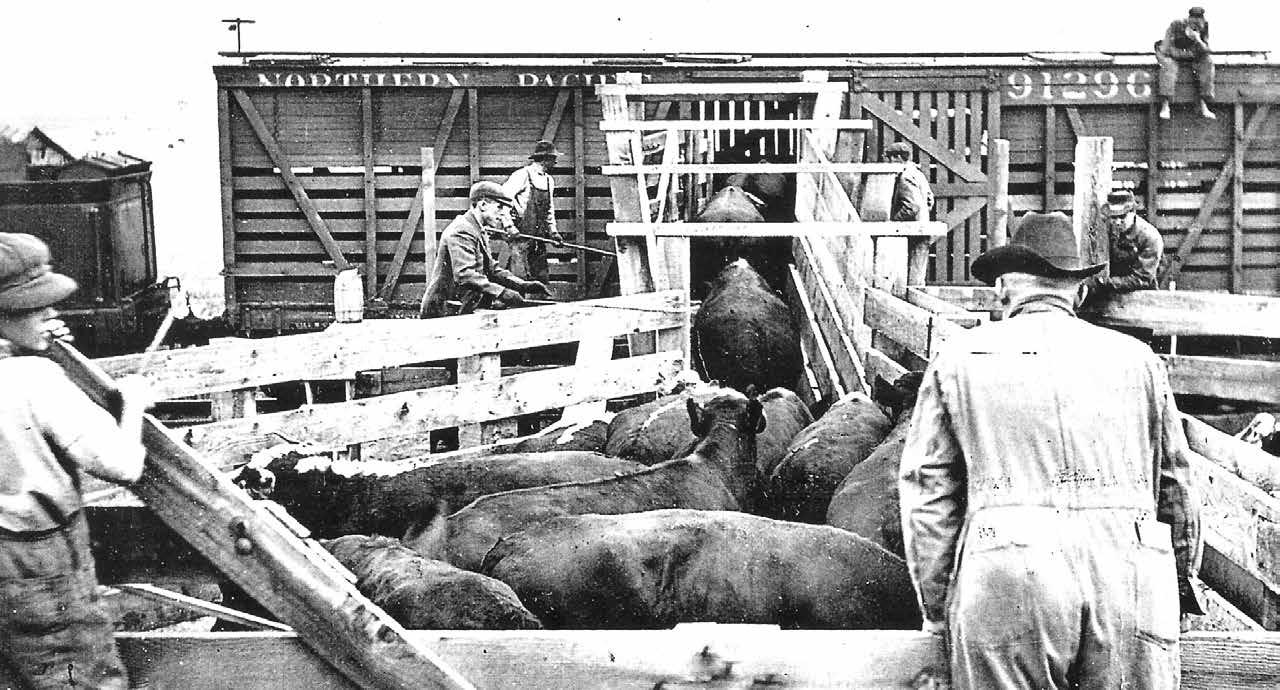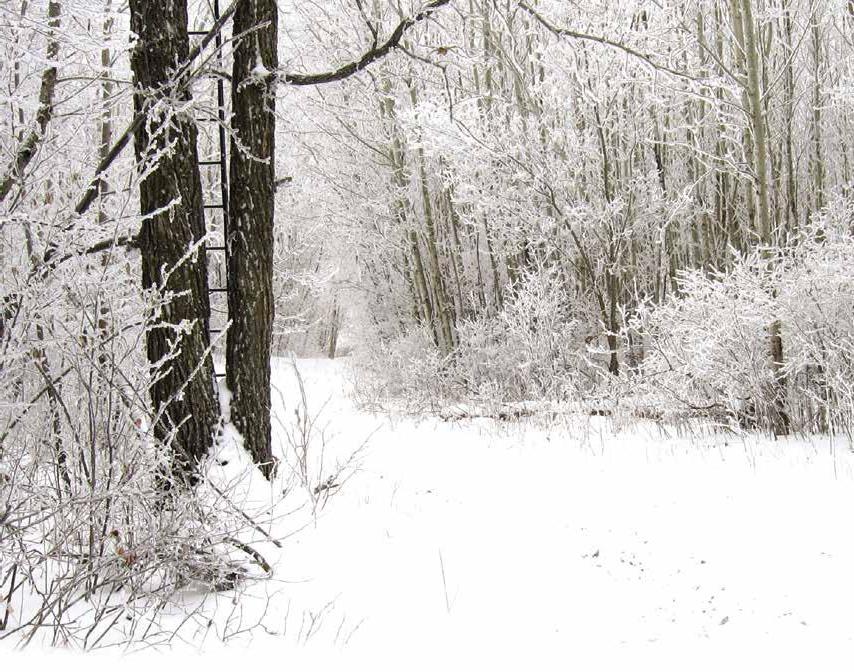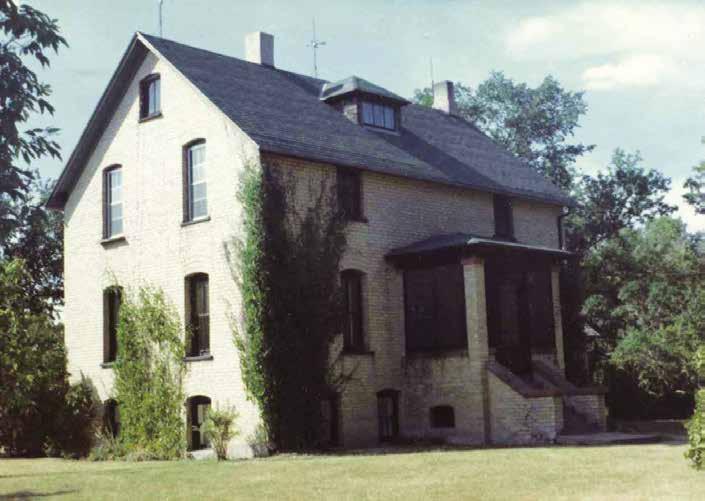
6 minute read
Wheat
By Patsy Ramberg
North Dakota skies are endless. The sun’s ferocity turns the blue to black as it tumbles toward the horizon to approach whatever, but the sun floods back and the wheat ripples in the never-ending sea. North Dakota wheat ripens from green to amber in July.
Advertisement

Gramma Christina, Tracy, and Eddie (author’s dad) on Christina’s lap. C. 1909.
All photos courtesy of the author.
When I take that summer drive up I-94 from my apartment in suburban St. Paul, I watch the turnover billow for miles and acres and more miles and acres.
Corn grows close in by the city, a clicking, clacking emerald sea of spiking tassels, ears still hidden, unhearing, embryos in the warm stock. Wheat grows to the north and ripens earlier. Tiny, hard kernels, geometric Vs, grow between flowing silky beards, its secrets kept inside. A common wonder.
I-94 runs northwest through the farmlands; the rolling hills of mid-Minnesota gradually turn flatter, but I can never tell exactly where. The cornfields gradually become smaller and the wheat fields become larger. Finally, I-94 pulls itself up and over the railroad bridge at Barnesville and the valley stretches, pulling me down into the flat heat of the wheatland. Coming off the bridge and around the curve, I drive into unforgotten time.
In the city, all I have is Wheaties—the hard, brown flake General Mills makes out of the hot, northern summer stored in the kernel. Wheaties is not enough. I have to keep green-turning-to-amber wheat in a vase in the apartment where I live with myself. A long time ago, people had families.
A wooden house with a slanting roof. Daddy says it was his grandmother’s; his parents worked her farm for a time. Daddy had scarlet fever in that house. He said he heard trains running through his bedroom. Gramma nursed him back, but he lost some hearing. After Daddy came Uncle Henry; then diabetic Fred who spent his teenage years as an invalid. When tiny Uncle Warren was born, Gramma kept him alive on the warm oven door.
I have a photograph from 1909 of Gramma, Daddy, and his half-sister Tracy, daughter of Grampa’s first wife who had died. Gramma is about twenty in the photo. She wears an elegant Victorian dress; her hair is piled into a neat knot on top of her head. Her face is somber, one eye slightly closed like the lid won’t work. Tracy is about five and doesn’t smile. Daddy is sitting on Gramma’s lap; he won’t smile either. He’s a pretty baby with a broad forehead and wide-spaced Germanic eyes.
Daddy told how, when he was young, he could see the Indian rings on the other side of Wolf Lake that sprawled in the middle of the farm. They were wide rings of stone and the teepees were long gone, of course, but until his death, I think, even in the city, Daddy still heard his imagined Indian songs and drums from across the lake.
His dad tried to grow wheat, but he wasn’t a farmer. He was just keeping to the dream. He tried to play the wheat market one year and waited too long; the wheat fell before he sold. That was when Gramma started to grow turkey and chickens. She packed the eggs in a pail cushioned by oats, and Daddy and Henry stuck a long pole through the pail’s handle and walked them into town all winter. The boys kept warm in the hats, mittens, and scarves that Gramma knit for them. The family lived through many winters on her turkeys, chickens, eggs, and cream, eating them or selling them.
I look like her, Daddy says. Short. Square. Solid. Hardly an American girl’s dream appearance.
My sister Louise and I went one summer to pick some green-turning-to-amber wheat from a field north of Fargo. I thought we had a pruning shears in the trunk of my car, but we didn’t so we pulled it up, roots and all. Grey-black Red River Valley dirt clung to the short root hairs. Neither of us had known wheat was so shallow rooted. We stood together, wheat in hand, the wind ruffling Louise’s blue calico jumper at her knees and curling my hair into my mouth and eyes, as we scanned the endless wheat field under a blue-black North Dakota sky.
As kids, we rode in the sleek ‘49 Fleetline Chevy to visit Gramma and Grampa on sun-drenched fall afternoons, Louise and I in the back. The windows were so high we couldn’t see out. We always arrived long after dark and the house was an oasis of light and warmth. Grampa’s Model A Ford guarded the yard.
A dinner of Gramma’s canned chicken was waiting. Even to this day Louise says it was the best chicken she ever ate. I remember the Kerr quart jars filled with yellow chicken wings and drumsticks lined up on the shelf over the cellar steps. I also remember the Lysol smell from the chemical toilet; at least we didn’t have to use the outhouse anymore. The wood stove was across the kitchen from the bathroom. I sometimes put wood in the burn box. I liked that, to see the flames leap around the splinters of a split log.
When we left after a visit, they would stand and wave under the arbor at the gate; morning glories grew around and over the top of it. They’d wave until they couldn’t see the Chevy anymore. I would wave back as long as I saw a speck.

Eddie Knalson (1909-1995) with his parents, John and Christina Knalson in 1947.
The November Gramma died of diabetes, Louise came from Bemidji State Teachers’ College, and we all drove together from the small Minnesota town we lived in at the time. We ate Gramma’s chicken together in that brightly lit house. For the first time, I noticed how much Daddy had begun to look like Grampa. Short. Square. Gray haired. Shuffling.
At the funeral, Grampa stopped at Gramma’s casket. In a tone as vast as the Dakota sky, he said, “Oh, Ma!” She was the third wife he had laid in a grave.
Daddy told how one day when he was plowing a neighbor’s wheat field, he came across a small, fenced area in which he saw a rudely made grave marker. Just a young man then, and curious, he stopped the horses and had a look-see. Meadow grass nearly obscured one of the stones, but the other clearly bore the name “Philip” and Daddy’s surname. The age span on the marker was only a few days. It was the first Daddy knew about this wife or baby boy, his half-brother. Grampa had never spoken of either of them.
He finished the plowing but as long as he lived, he could not remember where under that blue-black North Dakota sky those graves were.
The prairie holds its secrets.
Sometimes, in the morning, before I go to my job in the city, I will eat a bowl of Wheaties. Or Cream of Wheat. Often, as I eat, I will read a book, but from the table I can see a picture of the North Dakota farm, and, on the shelf under it, the vase of wheat. Its shallow roots have stretched all this way across space and time.
PATSY RAMBERG lives in White Bear Lake, Minnesota, where she writes, reads, knits, gardens, and admires her grandchildren. Her first memory is of the golden, rolling wheat fields on her grandparents’ North Dakota farm near Harvey. She edited and added her reminiscences about her heritage (Germans from Russia and northern Germany) to a memoir written by her father, Eddie Knalson, The Farm at Pony Gulch, published in 2012 by the Germans from Russia Heritage Collection, NDSU, Fargo.










